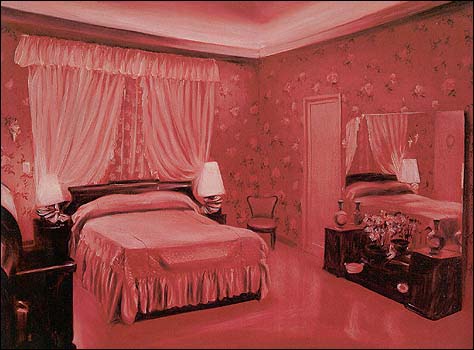University Art Museum, UCSB,
Oct 10, 2000 - Dec 16, 2000
Santa Barbara, CA , USA
Cuba: A narrative walkthrough of the exhibition
by Cynthia MacMullin
Review:
Several artists example the exhibitions themes of History, Isolation, and Invention; Fernando Rodriquez, Pedro Alvarez, Los Carpinteros, Osvaldo Yero, KCHO, Sandra Ramos, and Carlos Estevez. Cuban artist Fernando Rodriguez comments on Cuba's historic social-political evolution since the Revolution of 1959. His carved wood processional sculpture entitled Pa Cuba, or For Cuba, portrays a lifesize male figure wearing sun glasses, holding a cane, followed by a battalion of crudely formed wagons filled with gifts for the people of Cuba. The central figure is a fictitious but noble character whom Rodriguez has named "Francisco de la Cal" . He represents a humble, yet patriotic guajiro or peasant soldier in the Revolution, who followed his heroes attempts to transform the revolutions utopian visions into reality. De la Cal was symbolically struck blind shortly after the triumph of the Revolution. The goods in his wagon are symbolic of the goals of the revolution to fulfill the needs of the people. Included in his wagon's cargo are various essential and desireable painted wooden objects: containers for diesel fuel; light bulbs; paint cans and brushes; walkman radios; tubes of toothpaste; soap; tampons; condoms; aspirin, among other personal items. Cuban society has lacked many of these needs since the beginning of the financiallystrained "special period." ThIs period occurred between 1990 and1994, immediately after the breakup of the Soviet Union. At that time subsidies to Cuba had end, and shortages were amplified. A central theme in Rodriguez' art is finding a balance between idealized truths and daily reality. His art often appears amusing due to its naive and crude style, yet it subtly criticizes the goals of the Revolution to provide for the basic needs of all Cubans.and the inability to attain them.
Image 1
|







